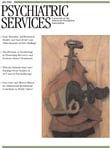New Justice Center Guide on Expanding Housing Options After Release From Incarceration
Each year more than 735,000 people are released from prisons and an estimated nine million are released from jails. Successful community reentry often hinges on finding stable housing, but the obstacles are significant. Family and friends may be unwilling to house these individuals. Private-market rental housing may not be an option because the cost is too high or landlords are unwilling to rent to people with criminal records. Public housing often bars those with a criminal history. Even when these barriers are not present, affordable units are frequently scarce or unavailable. A study in New York City found that more than 30% of single adults who enter homeless shelters have recently been released from city and state correctional institutions.
The Council of State Governments Justice Center has a new publication— Reentry Housing Options: The Policymakers' Guide —that describes six alternatives for reentry housing, including their benefits and limitations. The options are private-market rental housing, public housing, affordable housing (nonprofit or privately owned and managed), halfway houses, supportive housing, and specialized reentry housing. The guide examines three approaches to enhance the availability of these housing options: greater access, increased housing stock, and revitalized neighborhoods. The guide also provides case examples of how each approach has been put into action by a particular jurisdiction.
In Kansas state leaders used the approach of revitalizing a neighborhood in the city of Wichita to reduce a growing prison population that was fueled in large part by high rates of reincarceration of individuals who had violated parole or probation conditions. Typically, the revitalized neighborhood approach combines the resources of government agencies and nonprofit and for-profit organizations and focuses them on a specific area to improve services and supports for all community residents. In Kansas efforts were focused on central northeast Wichita, which occupies one-sixth of the city and has the highest incarceration rate in the state.
In 2007 a policy group of private- and public-sector officials was formed to guide a collaborative effort called the New Communities Initiative. The city of Wichita set aside $250,000 for the creation of a detailed strategic plan to address the problem of more than 800 vacant houses, a low student graduation rate, and high unemployment. With the plan in hand, city officials now plan to initiate a formal request for proposals to implement it. Already, the city has built a new school in the community and increased the types of family supportive services available to residents, including transitional case management services for people released from incarceration.
The authors of the guide note that no single housing approach will be a perfect fit for a jurisdiction. The guide is designed to help community leaders and policy makers increase their knowledge of reentry housing alternatives and specific approaches to creating more housing options to improve the chances that individuals will reenter the community safely and successfully.
Publication of Reentry Housing Options: The Policymakers' Guide was supported by the Bureau of Justice Assistance, U.S. Department of Justice, and is available at justicecenter.csg.org.



